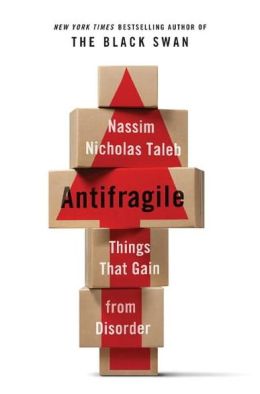 You could be forgiven for mistakenly assuming this story to be a work of pop fiction from the colorful and restless minds of Quentin Tarrantino or the Coen brothers. But in another example of life mirroring art, it’s all true.
You could be forgiven for mistakenly assuming this story to be a work of pop fiction from the colorful and restless minds of Quentin Tarrantino or the Coen brothers. But in another example of life mirroring art, it’s all true.
From the New York Times:
In November 2011, Paul Frampton, a theoretical particle physicist, met Denise Milani, a Czech bikini model, on the online dating site Mate1.com. She was gorgeous — dark-haired and dark-eyed, with a supposedly natural DDD breast size. In some photos, she looked tauntingly steamy; in others, she offered a warm smile. Soon, Frampton and Milani were chatting online nearly every day. Frampton would return home from campus — he’d been a professor in the physics and astronomy department at the University of North Carolina at Chapel Hill for 30 years — and his computer would buzz. “Are you there, honey?” They’d chat on Yahoo Messenger for a while, and then he’d go into the other room to take care of something. A half-hour later, there was the familiar buzz. It was always Milani. “What are you doing now?”
Frampton had been very lonely since his divorce three years earlier; now it seemed those days were over. Milani told him she was longing to change her life. She was tired, she said, of being a “glamour model,” of posing in her bikini on the beach while men ogled her. She wanted to settle down, have children. But she worried what he thought of her. “Do you think you could ever be proud of someone like me?” Of course he could, he assured her.
Frampton tried to get Milani to talk on the phone, but she always demurred. When she finally agreed to meet him in person, she asked him to come to La Paz, Bolivia, where she was doing a photo shoot. On Jan. 7, 2012, Frampton set out for Bolivia via Toronto and Santiago, Chile. At 68, he dreamed of finding a wife to bear him children — and what a wife. He pictured introducing her to his colleagues. One thing worried him, though. She had told him that men hit on her all the time. How did that acclaim affect her? Did it go to her head? But he remembered how comforting it felt to be chatting with her, like having a companion in the next room. And he knew she loved him. She’d said so many times.
Frampton didn’t plan on a long trip. He needed to be back to teach. So he left his car at the airport. Soon, he hoped, he’d be returning with Milani on his arm. The first thing that went wrong was that the e-ticket Milani sent Frampton for the Toronto-Santiago leg of his journey turned out to be invalid, leaving him stranded in the Toronto airport for a full day. Frampton finally arrived in La Paz four days after he set out. He hoped to meet Milani the next morning, but by then she had been called away to another photo shoot in Brussels. She promised to send him a ticket to join her there, so Frampton, who had checked into the Eva Palace Hotel, worked on a physics paper while he waited for it to arrive. He and Milani kept in regular contact. A ticket to Buenos Aires eventually came, with the promise that another ticket to Brussels was on the way. All Milani asked was that Frampton do her a favor: bring her a bag that she had left in La Paz.
While in Bolivia, Frampton corresponded with an old friend, John Dixon, a physicist and lawyer who lives in Ontario. When Frampton explained what he was up to, Dixon became alarmed. His warnings to Frampton were unequivocal, Dixon told me not long ago, still clearly upset: “I said: ‘Well, inside that suitcase sewn into the lining will be cocaine. You’re in big trouble.’ Paul said, ‘I’ll be careful, I’ll make sure there isn’t cocaine in there and if there is, I’ll ask them to remove it.’ I thought they were probably going to kidnap him and torture him to get his money. I didn’t know he didn’t have money. I said, ‘Well, you’re going to be killed, Paul, so whom should I contact when you disappear?’ And he said, ‘You can contact my brother and my former wife.’ ” Frampton later told me that he shrugged off Dixon’s warnings about drugs as melodramatic, adding that he rarely pays attention to the opinions of others.
On the evening of Jan. 20, nine days after he arrived in Bolivia, a man Frampton describes as Hispanic but whom he didn’t get a good look at handed him a bag out on the dark street in front of his hotel. Frampton was expecting to be given an Hermès or a Louis Vuitton, but the bag was an utterly commonplace black cloth suitcase with wheels. Once he was back in his room, he opened it. It was empty. He wrote to Milani, asking why this particular suitcase was so important. She told him it had “sentimental value.” The next morning, he filled it with his dirty laundry and headed to the airport.
Frampton flew from La Paz to Buenos Aires, crossing the border without incident. He says that he spent the next 40 hours in Ezeiza airport, without sleeping, mainly “doing physics” and checking his e-mail regularly in hopes that an e-ticket to Brussels would arrive. But by the time the ticket materialized, Frampton had gotten a friend to send him a ticket to Raleigh. He had been gone for 15 days and was ready to go home. Because there was always the chance that Milani would come to North Carolina and want her bag, he checked two bags, his and hers, and went to the gate. Soon he heard his name called over the loudspeaker. He thought it must be for an upgrade to first class, but when he arrived at the airline counter, he was greeted by several policemen. Asked to identify his luggage — “That’s my bag,” he said, “the other one’s not my bag, but I checked it in” — he waited while the police tested the contents of a package found in the “Milani” suitcase. Within hours, he was under arrest.
Read the entire article following the jump.
Image: Paul Frampton, theoretical physicist.Courtesy of Wikipedia.

 The 13th Amendment to the United States Constitution was enacted in December 1865. It abolished slavery.
The 13th Amendment to the United States Constitution was enacted in December 1865. It abolished slavery.
 You might expect to find police drones in the pages of a science fiction novel by Philip K. Dick or Iain M. Banks. But by 2015, citizens of the United States may well see these unmanned flying machines patrolling the skies over the homeland. The U.S. government recently pledged to loosen Federal Aviation Administration (FAA) restrictions that would allow local law enforcement agencies to use drones in just a few short years. So, soon the least of your worries will be traffic signal cameras and the local police officer armed with a radar gun. Our home-grown drones are likely to be deployed first for surveillance. But, undoubtedly armaments will follow. Hellfire missiles over Helena, Montana anyone?
You might expect to find police drones in the pages of a science fiction novel by Philip K. Dick or Iain M. Banks. But by 2015, citizens of the United States may well see these unmanned flying machines patrolling the skies over the homeland. The U.S. government recently pledged to loosen Federal Aviation Administration (FAA) restrictions that would allow local law enforcement agencies to use drones in just a few short years. So, soon the least of your worries will be traffic signal cameras and the local police officer armed with a radar gun. Our home-grown drones are likely to be deployed first for surveillance. But, undoubtedly armaments will follow. Hellfire missiles over Helena, Montana anyone? Nassim Nicholas Taleb, one of our favorite thinkers and writers over here at theDiagonal recently published Antifragile, his follow-up to his successful “black swan” title Black Swan. In Antifragile Taleb argues that some things thrive when subjected to volatility, disorder and uncertainty. He labels the positive reaction to these external stressors, antifragility. (Ironically, this book was published by Random House).
Nassim Nicholas Taleb, one of our favorite thinkers and writers over here at theDiagonal recently published Antifragile, his follow-up to his successful “black swan” title Black Swan. In Antifragile Taleb argues that some things thrive when subjected to volatility, disorder and uncertainty. He labels the positive reaction to these external stressors, antifragility. (Ironically, this book was published by Random House). “Innovate or die” goes the business mantra. Embrace creativity or you and your company will fall by the wayside and wither into insignificance.
“Innovate or die” goes the business mantra. Embrace creativity or you and your company will fall by the wayside and wither into insignificance. Life coach Jayne Morris suggests that de-cluttering your desk, attic or garage can add positive energy to your personal and business life. Morris has coached numerous business leaders and celebrities in the art of clearing clutter.
Life coach Jayne Morris suggests that de-cluttering your desk, attic or garage can add positive energy to your personal and business life. Morris has coached numerous business leaders and celebrities in the art of clearing clutter. Some believe that AIDS was created by the U.S. Government or bestowed by a malevolent god. Some believe that Neil Armstrong never set foot on the moon, while others believe that Nazis first established a moon base in 1942. Some believe that recent tsunamis were caused by the U.S. military, and that said military is hiding evidence of alien visits in Area 51, Nevada. The latest of course is the great conspiracy of climate change, which apparently is created by socialists seeking to destroy the United States. This conspiratorial thinking makes for good reality-TV, and presents wonderful opportunities for psychological research. Why after all, in the face of seemingly insurmountable evidence, widespread common consensus and fundamental scientific reasoning, do such ideas, and their believers persist?
Some believe that AIDS was created by the U.S. Government or bestowed by a malevolent god. Some believe that Neil Armstrong never set foot on the moon, while others believe that Nazis first established a moon base in 1942. Some believe that recent tsunamis were caused by the U.S. military, and that said military is hiding evidence of alien visits in Area 51, Nevada. The latest of course is the great conspiracy of climate change, which apparently is created by socialists seeking to destroy the United States. This conspiratorial thinking makes for good reality-TV, and presents wonderful opportunities for psychological research. Why after all, in the face of seemingly insurmountable evidence, widespread common consensus and fundamental scientific reasoning, do such ideas, and their believers persist? Apparently the world once thought of the countries that make up the Scandinavian region as dull and boring. Nothing much happened in Norway, Sweden, Finland and Denmark besides endless winters, ABBA, Volvo and utopian socialist experiments. Not any longer. Over the last couple of decades this region has become a hotbed of artistic, literary and business creativity.
Apparently the world once thought of the countries that make up the Scandinavian region as dull and boring. Nothing much happened in Norway, Sweden, Finland and Denmark besides endless winters, ABBA, Volvo and utopian socialist experiments. Not any longer. Over the last couple of decades this region has become a hotbed of artistic, literary and business creativity.

 The gods of Norse legend are surely turning slowly in their graves. A Reykjavik, Iceland, court recently granted a 15-year-old the right to use her given name. Her first name, “Blaer” means “light breeze” in Icelandic, and until the ruling was not permitted to use the name under Iceland’s strict cultural preservation laws. So, before you name your next child Shoniqua or Te’o or Cruise, pause for a few moments to think how lucky you are that you live elsewhere (with apologies to our readers in Iceland).
The gods of Norse legend are surely turning slowly in their graves. A Reykjavik, Iceland, court recently granted a 15-year-old the right to use her given name. Her first name, “Blaer” means “light breeze” in Icelandic, and until the ruling was not permitted to use the name under Iceland’s strict cultural preservation laws. So, before you name your next child Shoniqua or Te’o or Cruise, pause for a few moments to think how lucky you are that you live elsewhere (with apologies to our readers in Iceland).

 Leaving the merits of capitalism or socialism aside for a moment, let’s consider the case for taxing bad behavior versus good. Adam Davidson, economics columnist and founder of NPR’s Planet Money, reviews the case now being made by a growing number of economists on both the left and the right. They all come to a similar conclusion: Forget about taxing good or constrictive behavior such as entrepreneurialism. Rather, it’s time to tax people for doing destructive and damaging things.
Leaving the merits of capitalism or socialism aside for a moment, let’s consider the case for taxing bad behavior versus good. Adam Davidson, economics columnist and founder of NPR’s Planet Money, reviews the case now being made by a growing number of economists on both the left and the right. They all come to a similar conclusion: Forget about taxing good or constrictive behavior such as entrepreneurialism. Rather, it’s time to tax people for doing destructive and damaging things. Many of us harbor dreams, often secret ones, of becoming a famous rockstar. Well, if you want to live well passed middle age, think again. Being a rockstar and living a long life are not statistically compatible, especially if you’re American. You choose.
Many of us harbor dreams, often secret ones, of becoming a famous rockstar. Well, if you want to live well passed middle age, think again. Being a rockstar and living a long life are not statistically compatible, especially if you’re American. You choose. Recent census figures from the United Kingdom show that Jedi is the seventh most popular faith overall, with just over 176,000 followers.
Recent census figures from the United Kingdom show that Jedi is the seventh most popular faith overall, with just over 176,000 followers.
 If you’re an office worker you will relate. Recently, you will have participated on a team meeting or conference call only to have at least one person say, when asked a question, “sorry can you please repeat that, I was multitasking.”
If you’re an office worker you will relate. Recently, you will have participated on a team meeting or conference call only to have at least one person say, when asked a question, “sorry can you please repeat that, I was multitasking.”